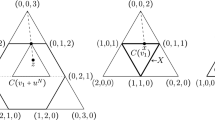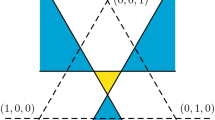Abstract.
An important open problem in the theory of TU-games is to determine whether a game has a stable core (Von Neumann-Morgenstern solution (1944)). This seems to be a rather difficult combinatorial problem. There are many sufficient conditions for core-stability. Convexity is probably the best known of these properties. Other properties implying stability of the core are subconvexity and largeness of the core (two properties introduced by Sharkey (1982)) and a property that we have baptized extendability and is introduced by Kikuta and Shapley (1986). These last three properties have a feature in common: if we start with an arbitrary TU-game and increase only the value of the grand coalition, these properties arise at some moment and are kept if we go on with increasing the value of the grand coalition. We call such properties prosperity properties. In this paper we investigate the relations between several prosperity properties and their relation with core-stability. By counter examples we show that all the prosperity properties we consider are different.
Similar content being viewed by others
Author information
Authors and Affiliations
Additional information
Received: June 1998/Revised version: December 1998
Rights and permissions
About this article
Cite this article
van Gellekom, J., Potters, J. & Reijnierse, J. Prosperity properties of TU-games. Game Theory 28, 211–227 (1999). https://doi.org/10.1007/s001820050106
Issue Date:
DOI: https://doi.org/10.1007/s001820050106




